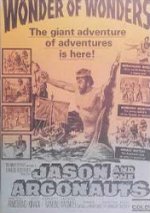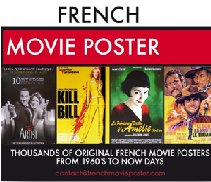In the world of movie paper, there are primarily
2 paper sizes that were targeted to use away from the theater. They were window
cards and heralds. Window cards were bought
by the theater managers in bulk to distribute in store windows or on poles
and heralds were bought in bulk to hand out. The other movie paper was purchased
in small quantity ( one or two) to place inside the theater lobby.
In 1933, the Benton Card Company looked to
move more into the movie material. The bulk printing was right down their
alley. They wanted to make available a less expensive line by using limited
colors on a cheaper card stock or paper for the smaller theaters that
couldn't afford bulk in the full color window cards and heralds that were
supplied by the studios and then National Screen Service
("NSS"). They grew to producing regular weekly material for over 400 theaters.
In 1955, American International Pictures approached
them to design and print window cards and heralds for their movie releases.
AIP targeted low budget films for the younger market and Benton material was
perfect.
Differences
The first major difference in the window
cards and heralds produced by Benton Card Company
and those produced by the National Screen Service is
the number of colors used.
Most Benton window cards and heralds were
printed using one color (monotone), two colors (duotone) or in some cases
three colors (tritone). The National Screen Service, as well as the other
major movie material printers, utilized full color presses, making their materials
much more vivid (and more expensive).
The second major difference between the
Benton cards and those of NSS is in the quality of the card stock and/or the
paper products used. Benton kept their printing costs down by using a cheaper,
thicker card stock for window cards and a less weight paper for their heralds.
The NSS utilized higher grade printing materials.
| |
 |
NSS Version |
Benton Version |
Collectibility
Because the Benton Card Company was considered
a "secondary" printing company, many long-time
movie art collectors shy away from collecting Benton window cards and heralds.
Benton window cards do not command the same dollar value as their NSS
counterparts, even though they are the same age, and may be nearly identical
to the NSS versions.
For example, the window card released by NSS
for the film Hi-De-Ho (1947) was printed in three color. The Benton
version was almost identical - same age, artwork, three color, pictures, etc.
The only differences are that the Benton version was printed on a thicker
cheaper card stock and contained a different tag line; however, for all intents
and purposes, they are identical until they reach the collector's market.
The Benton Card Company version of the Hi-De-Ho window card is valued
to most collectors at approximately 10%-20% of the retail value of the NSS
window card.
Benton cards are finding a market, however,
with newer collectors who want to collect original older materials at a less
expensive price.
Markings
There has been a lot of confusion about
Benton material. Since they were a secondary printer, their material was normally
available IN ADDITION to the regular NSS material.... BUT.. unlike
NSS material, Benton would make additional printings as needed and CONTINUES
to sell some of the material to this day. The good thing is that there are
ways to tell the differences.
There are 3 different categories of Benton
window cards. There are the original print, early reprints and later reprints.
Let's take a look at each:
ORIGINALS
Benton Card Company originals were printed
on thick heavy card stock, and the backside is shaded gray. An original will
carry the tag "Benton Card Company" usually centered across the bottom of
the window card.
These were made available to theater managers through the press kits just
like the NSS counterpart.
OLDER REPRINTS
Over the years Benton Card Company would reissue
some of their window cards. These reissues were printed on the same heavy
card stock as the originals, utilizing the same printing plates. The "Older"
reprints are distinguished from their original counterparts by a handwritten
notation somewhere on the bottom of the card. This notation contains a year,
a slash (I) and a stock number (i.e., 1949/844). The "Benton Card Company"
tag is found on some early reprints, but not all. These reprints look so much
like the originals that some of these reprints were mistakenly sold as originals.
NEWER REPRINTS
In the 1980's, when paper companies quit manufacturing
the older, thicker card stock, Benton began reprinting their window cards
on a newer, thinner, glossier card stock. These newer, more colorful reprints
carry the letter "R" on the lower border along with the stock number. The
year and slash were eliminated.
These newer 'reprints' are available for dealers
to buy at any time, actually placing them in a different category. They are
NOT being made for the re-distribution of the film but are printed whenever
needed moving them to the reproduction category and out of the collectible
catagory. See difference between collectible and commercial.
The Benton Card Company is still active in
printing window cards for music and other entertainment events and still sells
the newer movie reprints.
Some Controversy
Benton also did printing for other companies
when they were overbooked. Some of these jobs do affect the hobby. We know
of these 5 jobs for NSS and 1 for Globe that were printed by Benton:
Great Jesse James Raid - Jumbo Window Card
- for NSS - 53/480
Kentucky Rifle - Jumbo Window Card - for NSS - 55/182
On the Mesa of Lost Women - Jumbo Window Card - for NSS - 52/529
Outlaw Women - Jumbo Window Card - for NSS - 52/186
Sins of Jezebel - Jumbo Window Card - for NSS - 53/508
Skid Row - Window Card - Globe Printing
These do NOT have any markings of Benton but
have the appropiate markings for NSS and Globe.
For
more information, see:





